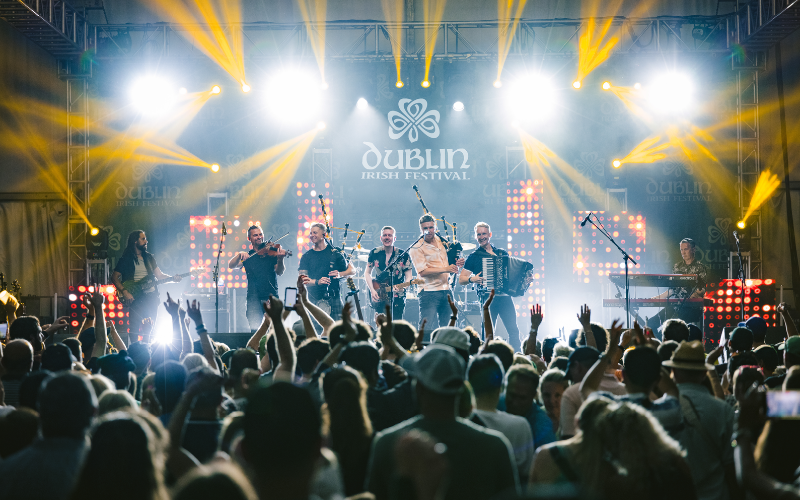Enniscorthy will commemorate the centenary of the death of Seamus Rafter on Sunday, September 9.
Seamus was a leading Republican in Wexford and he was killed while preparing gunpowder for the coming War of Independence. The centenary commemoration will begin at St. Aidan's Cathedral where after 12:30 mass a parade, with military honors from the Irish Army, will proceed to Abbey Square where a fine granite statue of Seamus stands.
Seamus Rafter was born in 1873 in Monalee, Ballindaggin, in a county where the legacy of the United Irishmen of 1798 was carried on by generations of families like the Rafters.
Seamus was a member of the Irish Volunteers and a leading figure in the Irish Republican Brotherhood in Wexford. Seamus was captain of the A company of the Volunteers Enniscorthy battalion and along with his brother Thomas and some others, they occupied the Anthenaem in the town in 1916. They held out for four days during Easter Week and only surrendered when a written order was sent to the Enniscorthy volunteers by Padraig Pearse.
Read more: The use of IEDs in the Irish War of Independence
Seamus was arrested and sentenced to death but the sentence was reduced to five years penal servitude in Dartmoor Prison. By June 1917, a prisoner amnesty saw Seamus released from the British prison and he went back to Wexford where he flung himself whole heartily back into Republican activities in the model county.
Seamus was a founder member of the Enniscorthy branch of the Gaelic League and it had its headquarters at Antwerp House on Mary Street. This old unassuming house which was built in 1790, also served as Enniscorthy's Irish Volunteer hall and the HQ of Na Fianna Eireann.
The Irish Volunteer hall 'Antwerp House' on Mary Street, Enniscorthy, Wexford. 100 years ago on August 26th 1918 Captain Seamus Rafter was injured in an explosion here while making gunpowder. He died weeks later. pic.twitter.com/am0jsWp5bN
— Pauline Murphy (@RealPMurphy) August 27, 2018
Seamus lived just across the road from Antwerp House, above his business, a public house at No.3 Slaney Place. Today the pub, now known as Holohans, still serves thirsty Slaneysiders and within its walls visitors are reminded of its historic past. It was here that Seamus hosted the likes of Pearse and MacDiarmada, Dev and Sean T O'Kelly before bringing them to Antwerp House to oversee the operations of the Enniscorthy freedom fighters.
In Antwerp House, which played host to dances and lectures as well as drills and Irish classes, Seamus and his comrades would prepare arms for the coming revolution. They would make gunpowder, grenades and fill cartridges. It was during the manufacturing of gunpowder that the fate of Seamus Rafter was sealed.
On August 26, 1918, an explosion rocked Mary Street. Seamus was badly injured while making gunpowder and lingered in great pain for two weeks before death finally took him on September. 12 The nature of his death was declared as effects from severe gunpowder burns.
Read more: True scale and violence of Ireland War of Independence as seen from Kerry
The funeral of Seamus Rafter produced a massive turnout across Wexford. In his witness statement from the Bureau of Military Archives, Quartermaster of the north Wexford Volunteers Patrick Doyle described the funeral: "The funeral to Ballindaggin cemetery was one of the largest ever seen in County Wexford. Most of the Volunteers in north Wexford marched in the funeral procession, many wearing volunteer uniform. Later those who wore uniform were arrested by the RIC and charged with wearing uniform and sentenced to terms of imprisonment."
Seamus was revered by many in Wexford including young Republicans and in his witness statement Thomas Dwyer of the Wexford Fianna described the funeral: "A thousand Volunteers, members of Fianna Eireann, Cumann na mBan and the public marched in torrential rain to his last resting place in Ballindaggin Cemetery five miles from Enniscorthy.....before a large sorrowful gathering, the smuggled guns, rang out their funeral farewell."
One hundred years after his death the people of Wexford still remember and revere Seamus Rafter.
Do you have any local historical stories you'd like to share? Be sure to let us know at [email protected].
This article was submitted to the IrishCentral contributors network by a member of the global Irish community. To become an IrishCentral contributor click here.




Comments